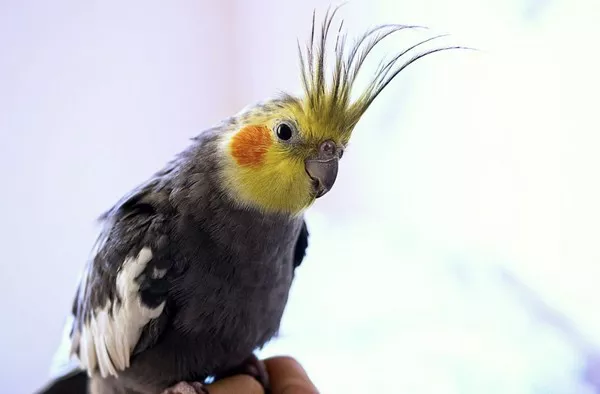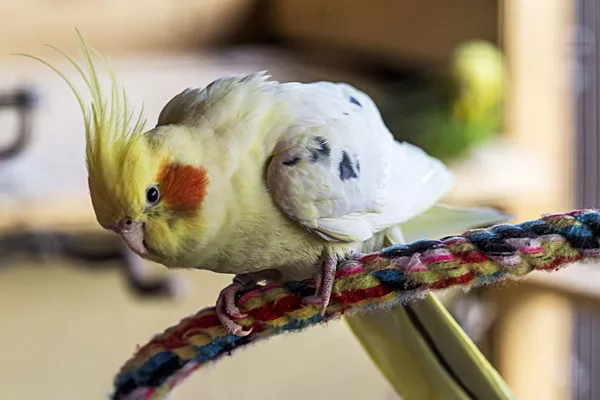African spurred tortoises, also known as Centrochelys sulcata, are one of the largest species of tortoises in the world. These magnificent reptiles, native to the deserts and savannas of sub-Saharan Africa, have become popular as exotic pets due to their relatively calm nature and impressive size. However, keeping an African spurred tortoise as a pet is not a decision to be taken lightly. To ensure their health, longevity, and happiness, their habitat must closely resemble the conditions of their natural environment.
This article will delve into the specific needs of African spurred tortoises in terms of their habitat, focusing on essential factors such as space, temperature, humidity, lighting, diet, and enrichment. By understanding these needs, pet owners can provide the best care for their tortoise, ensuring it thrives in captivity.
1. Overview of the African Spurred Tortoise
Before discussing their habitat, it is important to understand the basic characteristics of African spurred tortoises. These tortoises are named for the characteristic spurs on their hind legs, which are prominent in adult males. They are also known for their large, domed shells that are typically brown with yellowish or tan patterns. In the wild, they can grow up to 30 inches long and weigh as much as 200 pounds, although pet tortoises may be slightly smaller.
African spurred tortoises are herbivores and spend much of their time foraging for grasses, leaves, and succulent plants. They are well-adapted to arid environments, where they can go for extended periods without water. However, they still require a reliable water source and specific environmental conditions to stay healthy in captivity.
2. Space Requirements: Providing Room to Roam
One of the most important considerations when setting up a habitat for an African spurred tortoise is space. These tortoises are known for their large size, and they need plenty of room to roam, exercise, and explore. In the wild, they can cover great distances as they search for food, and this natural behavior needs to be replicated in captivity.
Outdoor Enclosure
For African spurred tortoises, an outdoor enclosure is ideal. In fact, providing a large outdoor space is one of the best ways to meet their space needs. The enclosure should be secure, as these tortoises are adept at digging and may try to escape if given the opportunity. The fence should be at least 18 inches high to prevent them from climbing over, and it should be buried into the ground to prevent them from digging underneath.
A suitable outdoor enclosure should provide enough space for the tortoise to move freely. For a single adult African spurred tortoise, the enclosure should be a minimum of 100 square feet. Larger spaces are even better, as they allow the tortoise to explore and find food naturally. The enclosure should also be designed with safe hiding spots, such as rocks or logs, where the tortoise can seek shelter from the sun and predators.
Indoor Enclosure
If outdoor space is not available, an indoor enclosure can still be suitable, provided it is large enough. Indoor enclosures for African spurred tortoises should be at least 4 feet long and 2 feet wide for juveniles. However, as the tortoise grows, the enclosure should be scaled up. Ideally, the indoor enclosure should offer a minimum of 10–12 square feet of space for an adult tortoise.
For indoor habitats, it is crucial to replicate the environmental conditions of the tortoise’s natural habitat. This includes controlling temperature, humidity, and lighting, which will be discussed in the following sections.
3. Temperature: Mimicking the Desert Sun
African spurred tortoises are native to the hot, dry climates of Africa, and their habitat must reflect these conditions. Temperature is one of the most crucial aspects of their care, as they are ectothermic animals, meaning they rely on external sources of heat to regulate their body temperature.
Daytime Temperature
During the day, African spurred tortoises require a basking area that is between 95°F and 100°F (35°C and 38°C). This area should be a spot where the tortoise can warm up by absorbing heat, which is essential for their digestion and overall health. The rest of the enclosure should have a cooler area that is around 75°F to 85°F (24°C to 29°C).
It is essential to provide a temperature gradient in the enclosure, where the tortoise can move between the cooler and warmer areas as needed. This allows the tortoise to regulate its body temperature effectively.
Nighttime Temperature
At night, the temperature can drop slightly but should not fall below 70°F (21°C). If the temperature in your area drops significantly at night, a nighttime heat source such as a ceramic heat emitter or a night-time heat lamp may be necessary to maintain an appropriate temperature. This is particularly important in colder climates or during the winter months.
Heating Methods
To create a proper temperature gradient, you may need to use a combination of heating elements. Here are some common heating methods:
Basking Lamp: A heat lamp provides direct warmth to a small area, perfect for the basking spot. Be sure to choose a bulb with an appropriate wattage for the size of the enclosure.
Ceramic Heat Emitter: This device emits heat without producing visible light, making it ideal for maintaining nighttime temperatures without disturbing the tortoise’s natural sleep cycle.
Under-tank Heater: For indoor enclosures, a heat mat or under-tank heater can be used to warm the substrate from beneath.
When using heating devices, always monitor the temperatures closely using a thermometer to ensure that they remain within the appropriate range.
4. Humidity: Not Too Dry, Not Too Wet
While African spurred tortoises are adapted to arid conditions, they still require some humidity to maintain healthy skin and respiratory function. The humidity level in their habitat should be around 30% to 50%. Too little humidity can lead to dehydration and skin problems, while excessive humidity can cause respiratory issues.
Achieving the Right Humidity
To maintain proper humidity levels, consider the following strategies:
Water Dish: Always provide a shallow dish of clean water in the enclosure. The tortoise may drink from it, and the water will help maintain some moisture in the air.
Misting: Light misting of the enclosure can help raise the humidity levels, especially during the colder months when the air tends to be drier. Be sure not to overdo it, as excessive moisture can lead to respiratory issues.
Proper Ventilation: Good airflow is important to avoid excess moisture buildup. Make sure the enclosure is well-ventilated, especially if it is an indoor setup.
Substrate
The type of substrate you use in the enclosure can also affect humidity. A substrate that holds moisture but is not too damp is ideal. Common choices include:
Cypress Mulch: This substrate is excellent at retaining moisture without becoming too wet.
Hay or Grass: These materials mimic the natural desert environment and help control moisture levels.
Reptile Carpet: For indoor enclosures, reptile carpet is a low-maintenance option that prevents the tortoise from ingesting bedding.
5. Lighting: Simulating Natural Daylight
African spurred tortoises require ultraviolet (UV) light to help them synthesize vitamin D3, which is essential for calcium metabolism and shell health. Without adequate UV lighting, tortoises can develop serious health issues, such as metabolic bone disease.
UVB Lighting
A UVB light source is necessary to simulate the sunlight that tortoises would naturally bask under in the wild. UVB bulbs should be used in combination with the basking lamp, positioned over the warmest part of the enclosure. The light should be on for 10–12 hours a day to mimic a natural day-night cycle.
There are two types of UVB bulbs commonly used for tortoises:
Fluorescent UVB Bulbs: These bulbs emit a broad spectrum of UVB light and are suitable for larger enclosures.
Mercury Vapor Bulbs: These bulbs provide both heat and UVB light, making them a convenient option for smaller enclosures.
It is important to replace UVB bulbs every 6–12 months, as their effectiveness diminishes over time.
Natural Sunlight
If possible, allowing your tortoise to bask in natural sunlight for 30 minutes to an hour a few times a week can be beneficial. Be sure to supervise your tortoise when outside to ensure it does not escape or become stressed.
6. Diet: A Healthy, Balanced Diet
In the wild, African spurred tortoises primarily consume grasses, succulents, and other vegetation. Their diet must be high in fiber and low in protein to promote proper digestion and prevent obesity.
Key Components of a Healthy Diet
Grasses: The majority of the tortoise’s diet should consist of grasses. Fresh, non-toxic grass hay such as timothy or bermuda hay is an excellent choice.
Leafy Greens: Offer a variety of leafy greens such as dandelion greens, collard greens, and turnip greens. Avoid lettuce, as it has little nutritional value.
Vegetables: Offer occasional vegetables like squash, zucchini, and bell peppers.
Calcium: Calcium is essential for healthy bone and shell growth. You can provide calcium supplements or offer foods that are naturally rich in calcium, such as clover or calcium-rich vegetables.
Water
In addition to providing a water dish, you can also encourage hydration by offering water-rich foods like cucumbers or watermelon.
Avoiding Harmful Foods
Certain foods should be avoided, as they can harm your tortoise’s health. These include:
High-Protein Foods: Animal-based proteins, such as eggs or meat, should not be part of a tortoise’s diet.
Oxalates: Some vegetables, like spinach, contain oxalates, which can interfere with calcium absorption. These should be fed in moderation.
Toxic Plants: Always be cautious when foraging for plants. Certain common plants, such as foxglove and oleander, are toxic to tortoises.
7. Enrichment: Keeping Your Tortoise Stimulated
While African spurred tortoises are not as interactive as some pets, they still benefit from mental stimulation and environmental enrichment. Providing a variety of textures, shapes, and hiding spots within their enclosure will encourage natural behaviors, such as digging, foraging, and exploring.
Enrichment Ideas
Rocks and Logs: These can serve as both hiding spots and climbing structures, encouraging your tortoise to explore.
Foraging Opportunities: Scatter food throughout the enclosure to encourage natural foraging behavior.
Water Features: A shallow pond or water dish can encourage your tortoise to soak, which is beneficial for hydration and shell health.
Conclusion
Providing a suitable habitat for an African spurred tortoise requires attention to detail and a commitment to replicating their natural environment as closely as possible. By ensuring proper space, temperature, humidity, lighting, diet, and enrichment, you can help your tortoise thrive in captivity. With the right care, African spurred tortoises can live long, healthy lives and become wonderful companions for years to come.
Related Topics:





















